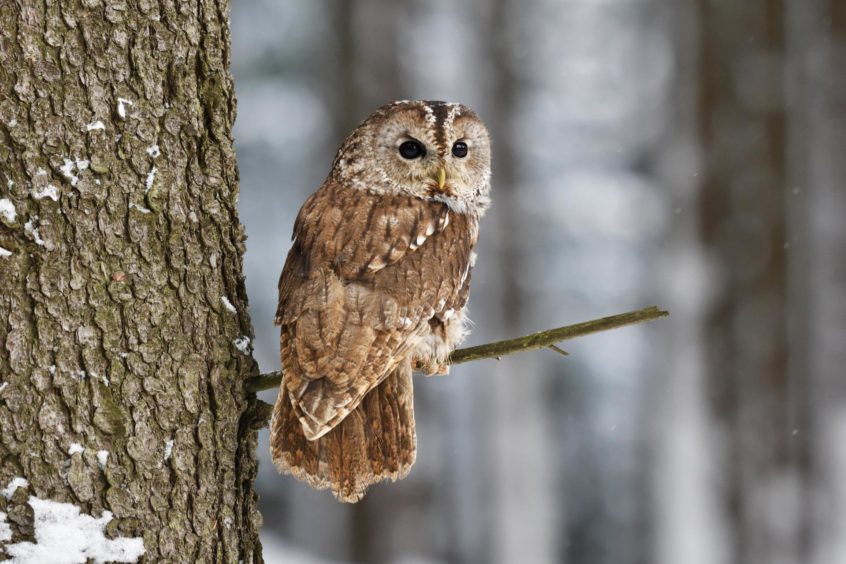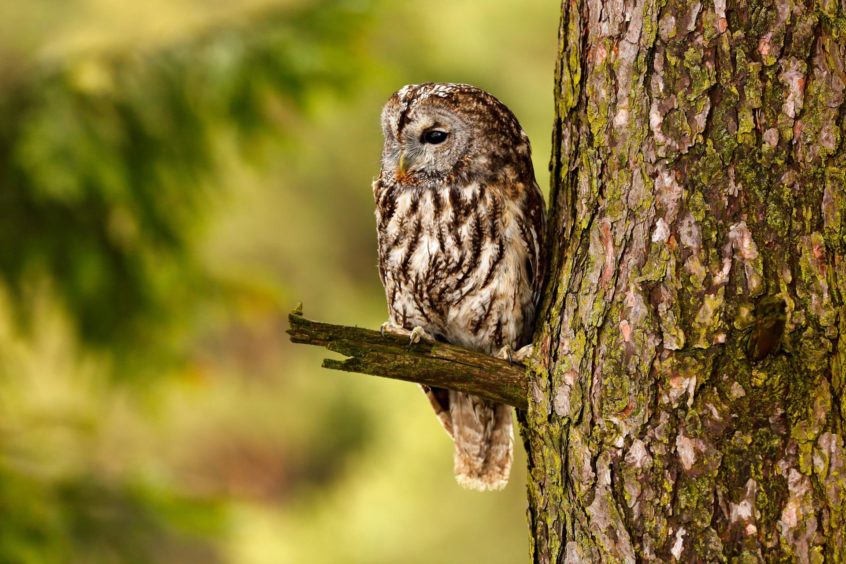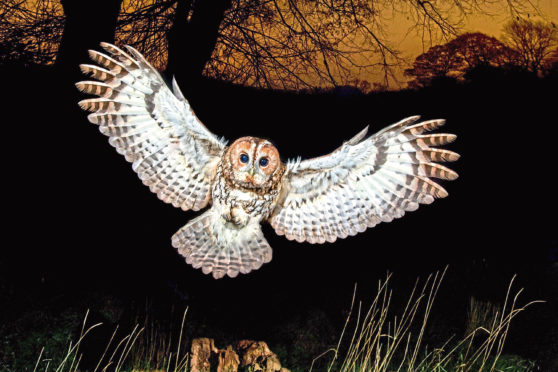A long quavering ‘hu…hu-hoooo’, followed quickly by another, delivered with the pitch-perfect tone of an orchestral flute. It was the call of a courting male tawny owl, the gentle notes floating across my garden from an adjacent wood.
Tawny owls are early nesters, and they are already prospecting suitable nest sites. As I listened to these beautiful calls, I wondered whether my local owls were showing any interest in a nest box I had erected for them in a tree by the woodland margin. Curious about this, I set my trail camera on a slope overlooking the box, but despite checking its memory card every day for the following week, there were no videos of any owls.
While disappointed, there was still time yet for the owls to find the box. However, I suspected this was a forlorn hope, given that this pair probably had a favoured tree hole or old crow’s nest from the previous year, which they had already pin-pointed for using again.

Gilbert White, the 18th century nature diarist, was intrigued by the subtle variations in the call of the tawny owl. He wrote: “My musical friend, at whose house I am now visiting, has tried all the owls that are his near neighbours with a pitch-pipe set at concert pitch, and finds that they all hoot in B flat”. However, he recounted later of instances of other owls hooting in different keys. White wondered: “Do these different notes proceed from different species, or only from various individuals?”
Tawny owls are mysterious birds, relatively common yet seldom seen because of their nocturnal habits. Although essentially woodland birds, this is not always the case, and I remember once seeing a hunting tawny at dusk in Glen Geusachan in the heart of the Cairngorms, miles from any trees. David Stephen, the 20th Century naturalist, also remarked upon the fact that tawnies will sometimes nest in rock holes at ground level in the Highlands, far out on the open hill.
Finding roosting tawnies during the daytime is challenging. They tend to sit on a branch right next to the tree trunk, making it hard to detect their cryptically camouflaged forms. One productive method is to search around the base of trees, where a scattering of owl pellets on the ground is a sign that a bird might be in the branches above. These grey pellets are the indigestible remains of their prey, typically consisting of fur, tiny rodent bones and the like.

Another way of detecting the presence of tawnies, especially late in the day, is to listen for the alarm calls of songbirds, for when they discover an owl, they are quick to voice their displeasure.
Back in my local wood, I still hear the tawnies hooting on most nights. Mesmerised by their haunting calls, I let my mind drift, carried away by nature’s night music.
Info
The tawny owl is a wait-and-see predator, sitting on a branch or tree stump and carefully scanning the ground below for mice and voles, the large eyes gathering in every last vestige of meagre light.










